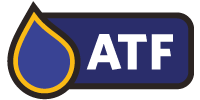Health and Safety Policy and Approach
Our objective is to provide all ATF Fuels (ATF) employees and the people who come into contact with our business, with a safe and healthy working environment.
It is our longer term goal to achieve world class health and safety performance with a goal of zero incidents. This supports our core value of safety, the elimination of hazards and protecting people and property.
It is the policy of ATF to maintain the highest standards of health and safety applicable to the aviation industry we operate in, and to ensure that our activities comply with applicable and relevant Health and Safety laws and regulations.
“Zero Incident Philosophy”
ATF have a zero incident philosophy and process to help us identify and manage the health and safety risks we face at work and to drive continuous improvement in our health and safety performance.
How will we get there?
- We are committed to achieving a working environment which is safe and secure and promotes healthy lifestyles.
- We will aim to pursue, achieve and promote best practices on Health and Safety specific to the aviation industry. This will be accomplished through our Safety Management System (SMS) to give our managers and employees direction on the standards we expect our business to achieve. The SMS will be based on globally recognized standards such as but not limited to OHSAS 18001. To achieve this, we will provide our managers and supervisors with appropriate information, instruction and training to carry out their duties in line with this standard and we will provide sufficient professional and financial resources to support our business’ leaders and managers in achieving it.
- Our businesses will seek to continually improve our Health and Safety performance by using a Safety and Health Business Plan approach to identify the actions we are going to take. We will measure how we are doing and regularly report on our performance, so that we know that we are reaching our planned targets. The plan will focus on elements such as management leadership and employee involvement, hazard recognition and analysis, employee training among other areas.
- We will encourage a culture of effective near miss reporting to proactively address situations that under different circumstances could have resulted in personal injury and/or property damage.
- By investigating near misses and incidents, conducting thorough root cause analysis and sharing the lessons learned from them across the Group, we will minimise the potential for similar injuries and work-related ill health.
- We will audit ourselves to ensure that we comply with our defined processes and practises and to help us understand how to further improve our Health and Safety performance, so that we can focus our attention in order to achieve our short and longer term goals. We will utilize the services of 3rd party specialists (as needed) to ensure our internal audit process is thorough and robust.
What is my role in this?
We each have an individual responsibility not to cause harm to ourselves or to others in the course of our work and to observe and flag process or practise that could potentially lead to the damage of people or property. Our line managers have an additional duty to make sure that those they manage are aware of and work within our Safety and Health policies and procedures.
What does this mean for our employees, customers and shareholders?
This policy reflects our core values as an organisation and supports our position as a leading global aviation support and aftermarket services provider.
Jonathan Best
Director
20 October 2020
